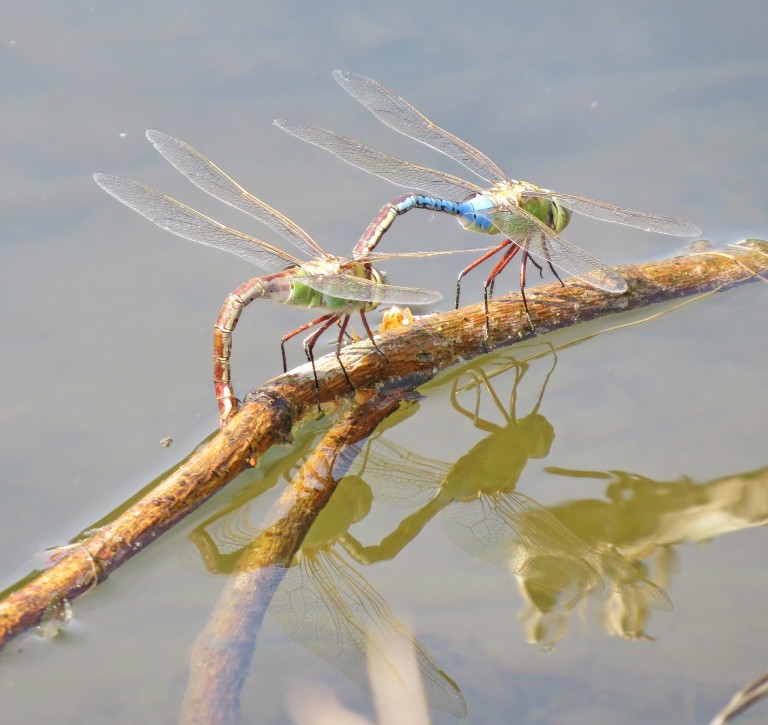With a flurry of new apps harnessing the power of your smartphone - everyone can participate in important scientific work.
There is much yet to be learned about insects and other invertebrates but simply not enough people observing their behavior and documenting their existence to be able to fill in the blanks of our knowledge. After all, there are tens of thousands of species to be found in each region of North America. By drawing in people from any background to help gather information, citizen science multiples the effort of research projects and can lead to great steps toward understanding the behaviors, seasonal movements, and habitat needs for common and uncommon species alike. It’s become so widely accepted that it has its own day of celebration, Citizen Science Day, which this year was on April 16.
The Xerces Society has been involved in citizen science for many years (possibly since before it was called “citizen science”!). Back in the 1970s, when Xerces was a purely volunteer organization, we launched the 4th of July Butterfly Count, one of the earliest projects using volunteers to gather information on butterflies. The count is now run by NABA. In later years, we also got our feet wet and created guides for aquatic biomonitoring (using invertebrates in streams to measure the waterbody’s health) and trained hundreds of local people to monitor their creeks. Because of the success of these programs and the interest of its participants, we have expanded our citizen science projects. Some of them are regional, others seasonal, but there are two major projects in which Xerces takes a leading role and which reach all corners of North America — and in which we hope you’ll participate.
The first is Bumble Bee Watch, a collaborative effort to track and conserve North America’s bumble bees. The project uses bumblebeewatch.org as a hub for gathering and identifying photos of bumble bees submitted by an army of volunteers. Equipped with cameras or smartphones, people are checking gardens, parks, farms, and natural areas for bumble bees, snapping photos, and uploading them to the web site. This has led to discoveries of rare species needing protection and the documentation of other species hundreds of miles outside of their previously known range. This is a partnership between University of Ottawa, Wildlife Preservation Canada, the Montreal Insectarium, the Natural History Museum of London, BeeSpotter, York University, and the Xerces Society.

The second major project is the Migratory Dragonfly Partnership (MDP). Formed in 2011, the MDP is a collaboration of scientists, nongovernmental organizations, academic institutions, and federal agencies from the United States, Mexico, and Canada. It has built a network of more than 1,000 volunteers who are investigating the annual movements and local life histories of migratory dragonflies throughout North America. This is done through its two main projects: Pond Watch and Migration Monitoring. In Pond Watch, volunteers adopt a site and visit the same pond or wetland regularly throughout the year to note the presence (or absence), emergence, and behaviors of any of the main migratory species. In Migration Monitoring, volunteers report on the abundance, timing, duration, and direction of travel of migrating dragonflies in fall and spring, and note any additional behaviors seen such as feeding or mating.

These are just a couple of our continent-wide initiatives; we also have some projects with a more regional focus. For many years, we’ve been counting monarch butterflies while they overwinter in California. Also, because so little is known about where those monarchs disperse to in the spring and summer to breed, we recently initiated a program that is collecting records of milkweeds and breeding monarchs in the western United States. Both of these projects rely largely upon volunteers who report records. In Oregon, we work closely with local watershed groups to monitor freshwater mussels in Portland’s urban streams.
There are many other citizen science projects with other organizations studying a huge range of species and issues, from changing bloom times due to climate change to habitat needs of a single species. The Citizen Science Association offers a way to connect with other like-minded groups and individuals, and the SciStarter website has an easy-to-search list of projects.
All of us at Xerces are eternally grateful to the thousands of you who share your precious time and contribute to our projects. It may not seem like much, but every sighting of a bumble bee or observation of a dragonfly really does contribute significantly to our understanding of how these insects interact with the environment, which enables us to make better decisions about how to protect and conserve these beautiful creatures.



